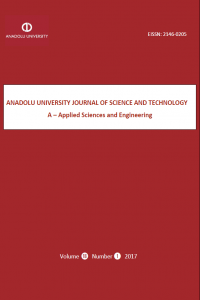Abstract
Air transportation industry has gone under a rapid and continuous growth for the last four decades. International Civil Aviation Organization (ICAO) and airlines anticipate that annual growth rate of air traffic will be 4.5-5.1% until 2030. Airspace capacity management becomes more critical for the safety, efficiency and sustainable growth of the industry. En-route areas cover the largest portion of the controlled airspace and are subdivided into small segments referred to as ‘en-route sectors’ usually monitored and controlled by a single air traffic controller in the relevant Area Control Center (ACC). When air traffic demand reaches or exceeds the available en-route sector capacity, serious aircraft delays occur at airports or in airspace and lead to system-wide congestions and interruptions in air traffic services, airline flight schedules and airport operations, and therefore result in increased operational costs, passenger dissatisfaction and air traffic controller workload. This study presents a multiple entry point assignment model based on a genetic algorithm to minimize delays and increase throughput of a generic high-altitude en-route sector. The proposed approach intends to use more flexible direct route configuration without changing the sector geometry and provide a framework for a decision support system for air traffic flow and capacity planning and management. The available single entry point sector configuration and its multiple entry point assignment alternatives were compared for various traffic scenarios. Multiple entry point configurations provided up to 10% increase in throughput and significant reductions in average delay per aircraft compared to the single point entry configuration.
Abstract
Details
| Subjects | Engineering |
|---|---|
| Journal Section | Articles |
| Authors | |
| Publication Date | March 31, 2017 |
| Published in Issue | Year 2017 Volume: 18 Issue: 1 |


